One of the most important heritage sites in Hong Kong, the former Marine Police Headquarters was constructed in 1884 and declared a monument 110 years later. The landmark white stucco building is one of the oldest surviving colonial government buildings in the territory, occupying a 1.1 hectare site, formerly on a tree covered hill overlooking the harbour. To learn more on the historical renovations, recently completed, PRC magazine spoke with Mr H S Chan, Project Manager of Cheung Kong (Holdings) Ltd.
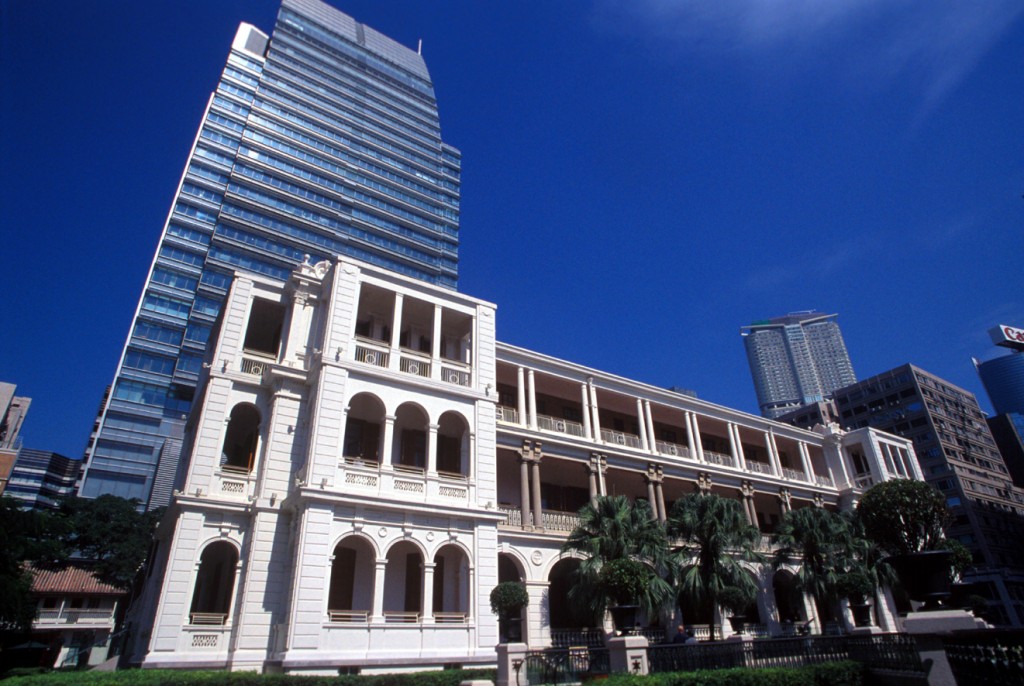 “The Hong Kong Marine Police moved out from the Former Marine Police Headquarters in Tsim Sha Tsui in 1996 to its current headquarters in Sai Wan Ho. The Former Marine Police Headquarters were unused until the Government announced a competitive tender for the design, restoration, preservation, creative reuse and operation of the compound in 2002.
“The Hong Kong Marine Police moved out from the Former Marine Police Headquarters in Tsim Sha Tsui in 1996 to its current headquarters in Sai Wan Ho. The Former Marine Police Headquarters were unused until the Government announced a competitive tender for the design, restoration, preservation, creative reuse and operation of the compound in 2002.
To tie the five historic buildings, (including a stable block, fire station and signal tower known as Round House), on the compound together into a cohesive whole, the Government’s tender conditions provided for an additional 7,213m2 of floor space to be created within the site below the level of the main building, now renamed as Hullett House. In May 2003, the tender was awarded to Flying Snow Ltd., a subsidiary of Cheung Kong (Holdings) Ltd. The site has been under construction and renovation until earlier this year,” stated Mr Chan.
Site Renovation
The main building was originally a two-storey structure, a major addition and alteration was carried out in 1920’s during which one storey was added atop the main building and a two-storey ancillary building was constructed in the northern part of the site. The south-east and south-west wings of the main building served as married quarters whilst the top floor of the west wing tower block was for a time the residence of the Superintendent of the Water Police. Since the 1920’s only minor alterations and maintenance works have carried out and as the historical buildings on the site were built in the late 19th and early 20th centuries, they all needed to be strengthened and restored to meet the current structural standards in Hong Kong. 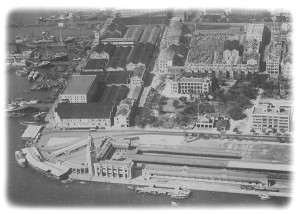
Given that several of the buildings are conservation listed structures the Lease conditions of the site includes a Technical Schedule, which stipulates the principles of all the heritage works and acts as a guideline to ensure that all intended works and methodology were deemed to be acceptable by Government before any renovation or construction works commenced. The main spirit of the guidelines was to facilitate the revitalization of the historical buildings for their intended use and to enable them to meet the current statutory standards.
At the same time, any additions or construction works done to the historical buildings had to be able to be undone or removed at a later date without causing any material injury, damage or change to them. “Before any work was commenced, each building was examined, room by room, to identify their historical interest and significance. If significant historical interest was identified in any area, the intended use or layout had to be revised to maintain the preservation of the area,” added Mr Chan.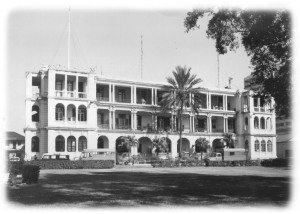
“Although originally well built, Hullett House required structural strengthening in order to meet the current statutory standards. The structural works and detailing were carefully designed to minimize any visual impact to the main building. Its current form is very close to the original state of the building.”
75 historical items, such as gas lamps, fireplaces, chimneys, rainwater hoppers etc., were specifically listed under the Lease and required to be preserved and restored. These items are mainly located within the main building. The project architect and the conservation consultants tried to use original materials as far as practicable. Even the plastering used to make good the existing facade was a mixture of lime and sand (retained during site formation works) to match the historical buildings.
“This has been an entirely Hong Kong-led restoration project. 1881 Heritage represents the first private sector conservation project of its kind in the territory,” added Mr Chan proudly. “However, the building restoration was certainly not a straightforward process. As explained before, before the commencement of any works, every building and its building fabric was carefully assessed for historical significance.”
No E&M services would have been permitted to disturb the areas of high heritage significance. Since Hullett House was mainly built from masonry and wood, it was slightly elevated from ground level in order to keep the wooden floor and floor joists away from ground moisture. The architect and E&M consultant made use of this elevated space for E&M services distribution and minimized the disturbance to the existing building and building fabric. Four kitchens were provided to serve the five restaurants inside Hullett House. All exhaust air ducts and kitchen layouts were carefully planned within the existing building fabric with the key consideration being not to affect the facade and architectural merit of the existing building. 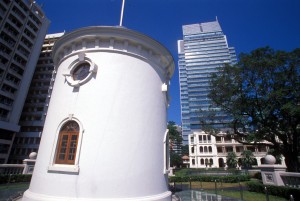
Originally a tree-covered hill, to develop the area below the level of the main building into the public space that we now know as 1881 Heritage required major earthworks and landscaping, yet many of the original, historical trees were able to be preserved. “There are actually five large Banyan trees, together with dozens of other trees at the back of Hullett House which have been retained and preserved in their original setting. They were carefully pruned in stages before any construction works were commenced on site. Since all the large trees were located at least 10m higher than ground level, heavy structural containment and struts were required to ensure the soil mass and the roots of the large trees were not disturbed and kept in their original setting during the construction process,” concluded Mr Chan.
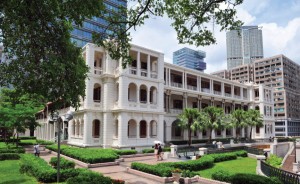 Marine Police Headquarters, reborn
Marine Police Headquarters, reborn
Hullett House has been designed to evoke memories of old Hong Kong and celebrate the traditions of the city’s rich and unique heritage and culture., Hullett House comprises probably the city’s only genuine boutique hotel consisting of thirteen suites, five restaurants and bars, including an intimate courtyard where performances and exhibitions will take place. Hullett House is named in honour of Richmond William Hullett, a 19th century English academic and scholar who lived and worked in Asia. A dedicated botanist, he discovered a variety of Bauhinia which was adopted as the floral emblem of Hong Kong in 1965, and since 1997, has proudly appeared on Hong Kong’s flag and coins.
The hotel’s rooms are individually designed, with private terraced balconies and views over the gardens and courtyard below. Room themes include the Imperial China suite, with hand-drawn red-lacquer murals and four- poster pagoda bed or the Shanghai suite, with an art deco style designed to conjure up the swinging 1930s. For a pastoral experience, guests may choose the English suite with country-manor turquoise tones and hand-painted murals depicting 12 birds local to Hong Kong.
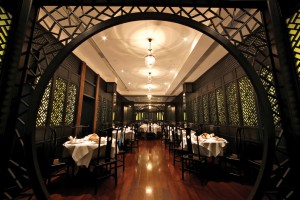 Wealthier tourists coming to Hong Kong will no doubt enjoy the array of upmarket retail shops lining the 1881 Heritage site, but as few people in reality will likely stay in the hotel’s premier priced rooms, the real attraction for Hong Kong people coming to Hullett House are the well conceived and executed food and beverage outlets. Stables Grill takes its name from its location in the old horse stables and offers casual dining. In line with its maritime heritage the walls of Stables Grill are panelled using salvaged original old wood decking from a 50 year-old ship. The all-leather 1930s pendant lamps are made from leather cylinders used for storing sheared wool to be transported to wool mills.
Wealthier tourists coming to Hong Kong will no doubt enjoy the array of upmarket retail shops lining the 1881 Heritage site, but as few people in reality will likely stay in the hotel’s premier priced rooms, the real attraction for Hong Kong people coming to Hullett House are the well conceived and executed food and beverage outlets. Stables Grill takes its name from its location in the old horse stables and offers casual dining. In line with its maritime heritage the walls of Stables Grill are panelled using salvaged original old wood decking from a 50 year-old ship. The all-leather 1930s pendant lamps are made from leather cylinders used for storing sheared wool to be transported to wool mills.
Originally a drinking place for visiting seamen and working policemen, there has been a Mariners’ Rest in the Marine Police Headquarters for more than 100 years. The present location also used to be the sergeants’ mess of the Marine Police Headquarters. Mariners’ Rest serves beers on tap and British gastro pub fare and patrons can even drink in the building’s original jail cells. The Parlour is open all day for English breakfasts and afternoon teas, becoming a sophisticated lounge bar by night and has three distinctive rooms, where east and west meet with a colourful explosion. The walls of the East Room are decorated with beautiful hand-painted canvases depicting Victoria Harbour at the turn of the 19th century.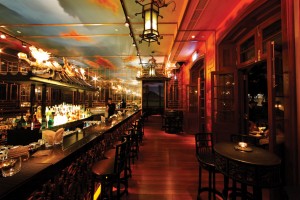
Chinese restaurant Loong Toh Yuen showcases Hong Kong cuisine by Executive Chef, Sham Wing On and Dim Sum master Chef Lam Mok, with a selection of traditional Hong Kong dim sum recipes and à la carte specials including modern interpretations of long-lost or hard-to-find Hong Kong dishes. At the heart of Loong Toh Yuen is the “50 Pigeons” Courtyard, which is surrounded by bespoke wrought-iron Chinoiserie tasseled lanterns and elegant colonnades, making it a stunning setting for alfresco dining. Hullett House’s fine dining Western restaurant, St. George, features modern European cuisine with a British accent led by one Michelin Star Chef Philippe Orrico. The high-vaulted ceilings, wooden trusses, crystal chandeliers, old leather sofas and heavy velvet curtains create an ambience that is distinctly plush and colonial.
Hullett House is set to become a landmark destination in the city. The property and its various elements are all housed within one of the oldest buildings located in the heart of Hong Kong dating back to 1881 and are a rare example of magnificent colonial architecture.
Hullett House can be found at 2A Canton Road, Tsim Sha Tsui, Kowloon, Hong Kong, opposite the Cultural Centre and just a short walk from the Star Ferry. For enquiries call +852 3988 0000 or visit www.hulletthouse.com.













